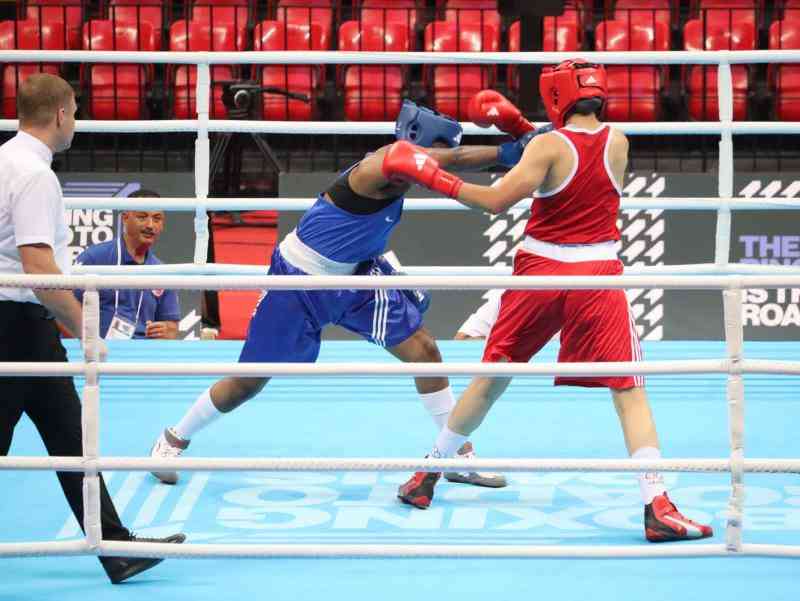When I came to Nairobi many years ago, there was a restaurant called Lavarini’s on what was then Government Road, which is now Moi Avenue.
Although it was housed in an ancient building with a low-slung sloping red iron-sheet roof that has since been pulled down and replaced with a more modern edifice, it was clear even to a village yokel like me that it was no ordinary establishment.
It had a discreet entrance lit by a couple of gilded lamps and at lunchtime, hungry passersby could catch glimpses of mostly white people, dining at tables covered with expensive red and cream cloth.
I knew enough even then to discern that the cutlery was the rare heavy silver. Lavarini’s was a relic of colonial Kenya that had resisted the tide of Africanisation that followed Independence.
Along with similar establishments such as Alan Bobbe’s Bistro on Koinange Street, it operated on rules that belonged to a by-gone era and it is no wonder that its days were numbered.
I have a certain journalistic curiosity about historical relics and not surprisingly, it led me in the early 1990s to Marino Lavarini, the veteran Italian restaurateur who had finally bowed to the inevitable, and closed down the Moi Avenue restaurant then moved to Harambee Avenue and opened a more contemporary one off Aga Khan Walk. Marino’s, as the new establishment was called, was a more regular place where you could order a plate of hamburger and chips without causing consternation and I found the owner an engaging storyteller, especially about “the old Nairobi.”
He spoke with nostalgia about a beautiful young city he fell in love with when he arrived in Kenya by ship after the Second World War, from Hargeisa in then Italian Somaliland, where he had operated a hotel for a while. He found a place where things worked. The buses ran on time and the streets were not only paved and maintained, they were hosed down three times a day. Were he alive today and witnessed the recent floods, Lavarini would be shocked at the spectacle of a half-submerged city threatening to retreat into its origins as a large swamp.
Speaking to him, it was clear that the Italian merely tolerated the hamburger-and-chips culture that commercial imperatives had forced upon him and missed the aristocratic old ways. In the old Lavarini’s days, people were required to come properly dressed for dinner.
So strict was the rule that the establishment kept a couple of spare dinner jackets and dark ties just in case an important person arrived at the door improperly dressed.
He recalled with pride in his voice the day, shortly after Independence, when Tom Mboya, Charles Njonjo and Paul Ngei — top officials in the new government — arrived for dinner either in shirtsleeves or business suits and to avoid embarrassment, proper jackets and ties were quickly found for them. The embarrassing matter of admissibility in hotels and restaurants in colonial times and even for quite some years after independence is one that many an apologist has been at pains to explain away.
I remember once interviewing Sir Michael Blundell, a key white settler leader who took part in the Lancaster House negotiations that led to Kenya’s Independence who as proof of his liberal attitude, pointed to the fact that he had done what was unthinkable to the white supremacists of the day by inviting Ngei to lunch at the Stanley Hotel, the citadel of racism in colonial times.
The other whites at the hotel walked out in protest.
When out of curiosity I asked him — we were having tea in his house — what the whites found so objectionable about eating together with people of a different colour, he looked surprised.
“Think of your grandfather,” he told me. “He probably covered his bottom with a piece of animal skin and wore nothing else underneath. Would you welcome him to sit on your expensive sofa after he had been sitting on the bare ground?” If truth be told, I had no answer for him.
Stay informed. Subscribe to our newsletter
 The Standard Group Plc is a
multi-media organization with investments in media platforms spanning newspaper
print operations, television, radio broadcasting, digital and online services. The
Standard Group is recognized as a leading multi-media house in Kenya with a key
influence in matters of national and international interest.
The Standard Group Plc is a
multi-media organization with investments in media platforms spanning newspaper
print operations, television, radio broadcasting, digital and online services. The
Standard Group is recognized as a leading multi-media house in Kenya with a key
influence in matters of national and international interest.
 The Standard Group Plc is a
multi-media organization with investments in media platforms spanning newspaper
print operations, television, radio broadcasting, digital and online services. The
Standard Group is recognized as a leading multi-media house in Kenya with a key
influence in matters of national and international interest.
The Standard Group Plc is a
multi-media organization with investments in media platforms spanning newspaper
print operations, television, radio broadcasting, digital and online services. The
Standard Group is recognized as a leading multi-media house in Kenya with a key
influence in matters of national and international interest.








